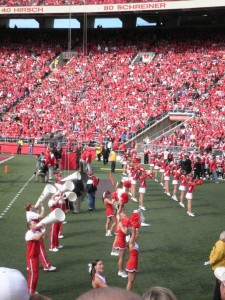 A bigger motivation than money is hard to believe, but it does exist. The kick that we get from being applauded is priceless. Only a person with true leadership qualities can create an engaged workforce. Offering rewards and opportunities before it’s too late is really important. Nurturing your employees with the skills that they require to attain future challenges is where the success of your company lies. If your business is facing failures consistently, then it is partially your fault. In such situations the bosses certainly lack the required skills and should consider working on their own skill development before blaming the employees. After all, a true leader is the one who is humble enough to admit their mistakes. Makes sense, right?
A bigger motivation than money is hard to believe, but it does exist. The kick that we get from being applauded is priceless. Only a person with true leadership qualities can create an engaged workforce. Offering rewards and opportunities before it’s too late is really important. Nurturing your employees with the skills that they require to attain future challenges is where the success of your company lies. If your business is facing failures consistently, then it is partially your fault. In such situations the bosses certainly lack the required skills and should consider working on their own skill development before blaming the employees. After all, a true leader is the one who is humble enough to admit their mistakes. Makes sense, right?
Yelling at your staffs can never improve the situation; rather it will worsen your bond with them. Once they build a negative perception about you, it will probably never change, and this will affect their performance.
Here are 12 effective ways to bridge the gap between bosses and the employees:
- Honest and generous with praise works in your favor- Be specific while you praise your employee and let them know you notice their efforts in details. You should always try your best to match the praise to their efforts. This may sound like a very simple concept, but embracing their potential should be your goal, rather than just expecting positive results. Try giving regular praise to your employees based on their valuable traits and soon you will see them praising each other, which is a good sign for a happy work culture.
- Get rid of managers for a change- Project managers maybe too good at handling their responsibilities but sometimes it is good consider their team handling responsibilities without a leader. Empowering your staff can give you surprisingly exceptional results. Without a leader they become more responsible and will work together on an equal level.
- Share your ideas with them- Nobody likes to be told what to do and what not to do, and therefore it is always advisable to share your ideas and make them theirs. This is quite simple because all you need to do is ask them their views about your ideas. This will boost their confidence to approach you with new ideas without hesitation.
- Give equal priority to each employee- A project becomes a success when each member of the team does their bit irrespective of the hindrances. Everyone should get equal credit for their contribution and feel proud for the team as a whole. This will make them realize that everyone is important and will never let success get to their head.
- A surprise lunch from the boss- Simply walk up to them and invites them for lunch and surprises them. Let them know you appreciate their work and they did impress you with their dedication. If you just hired new employees then, a surprise lunch is a great icebreaker for new team members. This is an awesome way to build trust and to establish a great rapport.
- Criticism will kill the enthusiasm- Never judge your employees based on something that is least important. Criticism is never fun on the receiving end, especially when you do it in front of others. An underperformer needs motivation, not a mulish boss who sabotages their confidence at every level. The more you support the less they focus on clock watching and become more productive.
- Share rewards first and then expect- Rewards can be in any form apart from increment and this is the time you make use of your creativity. Gift them free movie tickets, free gym membership, dinner reservations, salon or spa coupons, trophies and plaques. There are so many things that you can give them and let them know that you appreciate their efforts. This will motivate them to work harder on their future projects even before you asking them to do so.
- Comfort matters- Does comfort matters to you? Same is the case with your employees and bunch of little things can make a big difference. A fully stocked fridge, a comfortable couch (for a short nap occasionally) or allowing them to work from home if possible are all necessary perks. Comfort at workplace is the cornerstone of productivity.
- Flexible working hours- Everyone has a different “productive time of the day” and expecting employees to be actively working for the entire day is unreasonable. This can only waste time, so allow them to set their working hours (with valid reason). This will definitely elevate their performance and they won’t let you down.
- Throw a killer company party- Show interest in celebrations, just like you are enthusiastic about starting a new project. Celebrate when your employees perform well, organize birthday parties or raise a toast if you got a big client as your big breakthrough. Never underestimate the power of celebrations, as it brings positivity.
- Performer of the month- Although this is a very classic method of recognition, but it is still one of the favorites among the employees. Choose some star performers as nominees in different departments (categories). Pick all the outstanding employees and reward them for their magic behind the scenes.
Final thoughts: – Great things come to those who wait, and keeping patience with your employees can be a game changer. Be a generous boss by giving your attention to employees and you can learn from them. Review and analyze your employee performance through Performance Management System and give rewards to employees who have given sweat and blood to your business.
Author Bio:
Fretty Francis is currently a Software Analyst at SoftwareSuggest. She is passionate about HR, performance management, asset management, CRM among other things. In her free time you can find her either reading about tech stuff or listening to music.







